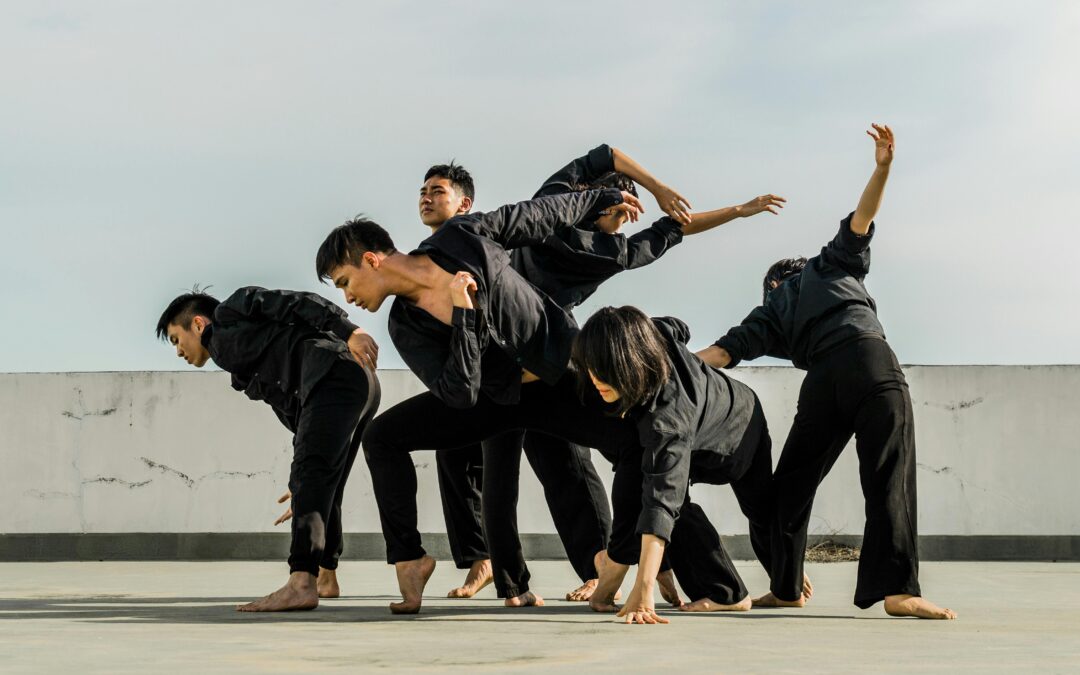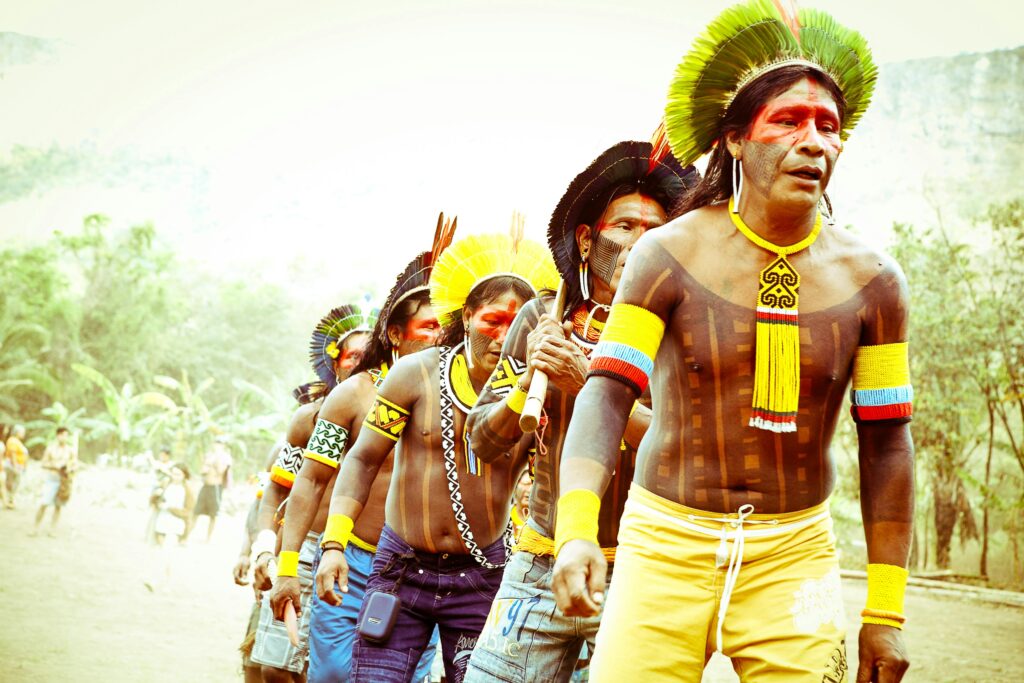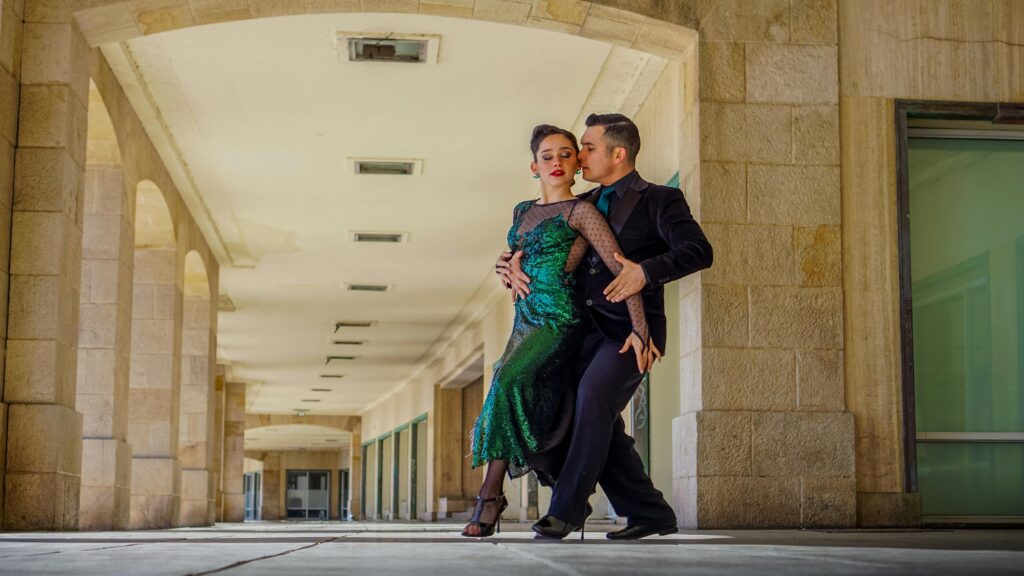
The Benefits of Dance and the Diversity of Dance Styles
The history of dance is as diverse and dynamic as the cultures and societies that have practiced it throughout time. While it’s challenging to provide a comprehensive overview in a brief format, here are some key highlights:
- Ancient Origins: Dance has ancient roots, with evidence of dance-like rituals dating back tens of thousands of years. In prehistoric times, early humans likely danced as part of religious ceremonies, social gatherings, and rites of passage. Cave paintings and artifacts suggest that dance was an integral part of early human culture.
- Classical Civilizations: Dance flourished in the classical civilizations of ancient Greece and Rome. In Greece, dance was closely linked to theater, with the development of dramatic forms such as tragedy and comedy. Greek dance forms like the choral ode and the dithyramb influenced later Western dance traditions. In Rome, dance was often associated with religious festivals and entertainment in arenas and theaters.
- Medieval and Renaissance Europe: During the Middle Ages, dance continued to play a significant role in religious rituals, courtly entertainment, and folk traditions across Europe. In the Renaissance period, dance experienced a revival, with the emergence of elaborate court dances, such as the pavane and galliard, as well as the development of ballet as a theatrical art form.
- 19th Century Ballet: The 19th century saw the rise of ballet as a highly codified and theatrical dance form. Ballet masters like Marius Petipa and choreographers such as Jean-Georges Noverre and August Bournonville played pivotal roles in shaping the classical ballet repertoire and technique. Ballet became synonymous with elegance, grace, and virtuosity, with iconic works like “Swan Lake,” “The Nutcracker,” and “Giselle” captivating audiences worldwide.
- 20th Century Innovations: The 20th century witnessed a period of unprecedented experimentation and innovation in dance. Modern dance pioneers such as Isadora Duncan, Martha Graham, and Merce Cunningham broke away from the rigid conventions of classical ballet, exploring new forms of movement, expression, and choreographic language. Additionally, social dances like jazz, tap, and hip-hop emerged and evolved, reflecting the cultural shifts and diversity of the modern world.
- Contemporary Dance: In the 21st century, dance continues to evolve and diversify, reflecting the globalized and interconnected nature of contemporary society. Contemporary dance encompasses a wide range of styles and approaches, from avant-garde experimentation to cultural fusion and hybrid forms. Dancers and choreographers draw inspiration from diverse sources, including technology, social issues, and cross-cultural exchange, pushing the boundaries of artistic expression and innovation.
Throughout history, dance has been a powerful means of communication, cultural expression, and personal creativity, transcending boundaries of time, language, and geography. It remains an integral part of the human experience, enriching lives and communities worldwide.
The Significance of Dance in Indigenous Cultures

Dance holds deep significance in indigenous cultures around the world, serving as a cornerstone of spiritual, cultural, and social life. Here are some key aspects of the significance of dance to indigenous cultures:
- Spiritual Connection: In many indigenous traditions, dance is a sacred practice that fosters a connection to the natural world, ancestors, and spiritual beings. Dances are often performed as part of religious ceremonies, rituals, and seasonal celebrations to honor deities, invoke blessings, and maintain harmony with the cosmos. Through dance, indigenous peoples express reverence for the earth, sky, water, and other elements of the natural environment, embodying a deep sense of interconnectedness and respect for all living beings.
- Cultural Identity: Dance plays a vital role in preserving and transmitting indigenous cultures, traditions, and knowledge from one generation to the next. Indigenous dances often incorporate storytelling, symbolism, and oral history, conveying important teachings about ancestry, mythology, and community values. By participating in traditional dances, indigenous peoples reaffirm their cultural identity, resilience, and collective memory, strengthening bonds within their communities and reaffirming their place in the world.
- Healing and Transformation: In many indigenous cultures, dance is a form of healing and transformation, addressing physical, emotional, and spiritual well-being. Healing dances, often accompanied by music, chanting, and ceremonial rituals, are believed to restore balance and harmony within individuals and communities, addressing illness, trauma, and spiritual unrest. Through movement and expression, dancers release negative energies, connect with inner wisdom, and cultivate resilience and renewal.
- Social Cohesion: Dance serves as a powerful tool for social cohesion and solidarity within indigenous communities. Group dances, performed at gatherings, festivals, and communal events, strengthen bonds among individuals, families, and tribes, fostering a sense of belonging, cooperation, and shared purpose. Through collaborative movement and rhythm, dancers celebrate shared heritage, express collective aspirations, and reinforce social ties that sustain community resilience and vitality.
- Resistance and Resilience: In many indigenous contexts, dance has been a form of resistance and resilience in the face of colonization, oppression, and cultural erasure. Indigenous peoples have used dance as a means of reclaiming their cultural identity, asserting sovereignty, and asserting their rights to land, language, and self-determination. Through expressive movements and cultural revitalization efforts, indigenous dancers assert their agency, voice, and presence, challenging dominant narratives and asserting the value of indigenous knowledge and ways of life.
Overall, dance holds profound significance in indigenous cultures, embodying spiritual, cultural, and social dimensions that are essential to the survival, resilience, and well-being of indigenous peoples worldwide.
Why Dance Matters
Dance is more than just a form of physical exercise—it’s a joyful expression of creativity, emotion, and connection that nourishes the mind, body, and soul. Here are a few reasons why dance is good for you:
- Physical Fitness: Dancing is a fun and effective way to improve cardiovascular health, strength, flexibility, and endurance, all while burning calories and toning muscles.
- Stress Relief: Moving to music can help release tension, reduce stress, and promote relaxation, offering a welcome escape from the pressures of daily life.
- Mood Enhancement: Dancing releases endorphins, the body’s natural feel-good chemicals, which can boost mood, increase energy levels, and promote a sense of well-being and happiness.
- Creative Expression: Dance provides a unique outlet for self-expression, allowing individuals to convey emotions, tell stories, and communicate without words through movement and gesture.
- Social Connection: Dancing with others fosters a sense of community, camaraderie, and belonging, promoting social interaction, teamwork, and mutual support.

Types of Dance to Explore
The world of dance is as diverse as it is dynamic, encompassing a wide range of styles, traditions, and cultures. Here are just a few of the many types of dance you can explore:
- Ballet: Known for its graceful movements, precise technique, and storytelling through dance, ballet is a classical art form that has captivated audiences for centuries.
- Hip-Hop: Originating in urban communities, hip-hop dance encompasses a wide range of styles, including breaking, popping, locking, and freestyle, and is characterized by its high energy, athleticism, and improvisation.
- Salsa: Originating in Latin America, salsa is a vibrant and sensual dance style characterized by its lively footwork, rhythmic hip movements, and infectious music.
- Contemporary: Contemporary dance is a fluid and expressive form that combines elements of ballet, modern dance, and improvisation, allowing for freedom of movement and artistic interpretation.
- Ballroom: Ballroom dance encompasses a variety of partner dances, including waltz, foxtrot, tango, and cha-cha, characterized by its elegant and graceful movements.
How to Get Started with Dance
Getting started with dance is easy and accessible to anyone, regardless of age, experience, or ability. Here are some tips to help you embark on your dance journey:
- Find Your Style: Explore different dance styles to discover what resonates with you most deeply. Try taking introductory classes or watching online tutorials to get a feel for different styles and techniques.
- Start Slow: Don’t be afraid to start slow and take things at your own pace. Focus on mastering basic movements and building a strong foundation before moving on to more advanced techniques.
- Practice Regularly: Consistency is key when it comes to improving your dance skills. Set aside time each week to practice, whether it’s in a studio, at home, or in your living room.
- Have Fun: Above all, remember to have fun and enjoy the process! Dance is a joyful and expressive art form that is meant to be enjoyed, so don’t be afraid to let loose, express yourself, and dance like nobody’s watching.
